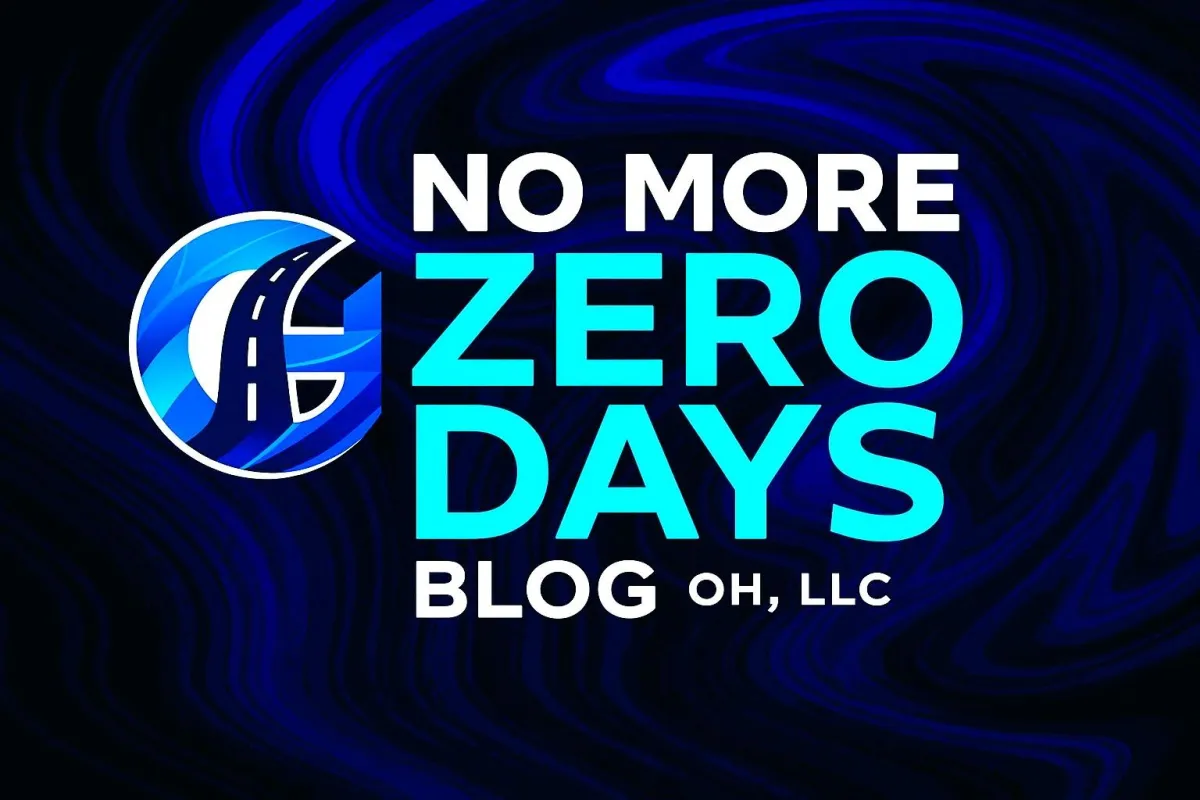
The Future of Business: How Smart Leaders Are Combining AI with Human Talent to Win Big
Building tomorrow’s competitive advantage through strategic human-AI partnerships
The business world is experiencing a seismic shift that’s redefining how we think about work, leadership, and competitive advantage. While 92% of companies plan to increase their AI investments, only 1% consider themselves truly mature in AI integration. This massive gap reveals a critical truth: the future belongs not to companies that simply adopt AI, but to those that master the art of human-AI collaboration.
The most successful organizations are discovering something remarkable. When humans and AI work together strategically, they achieve 3.6 times higher returns on AI investments and bring new products to market 4.2 times faster than competitors. This isn’t about replacing people with machines—it’s about creating partnerships that amplify what both humans and AI do best.
The Leadership Revolution: From Managing People to Orchestrating Intelligence
Today’s leaders need a fundamentally different skill set than their predecessors. Harvard Business School research confirms a powerful truth: “AI won’t replace humans, yet humans with AI will replace humans without AI.” This means leaders must develop both technological fluency and enhanced human skills like emotional intelligence and strategic thinking.
The transformation is already happening around us. By 2024, approximately 69% of routine management functions will be automated, freeing leaders to focus on what humans do uniquely well: creative problem-solving, team development, and strategic innovation. Leaders who embrace this shift report higher job satisfaction and better business outcomes.
Building AI-Ready Leadership Teams
Forward-thinking organizations are revolutionizing leadership development through AI-powered training tools. These systems offer unlimited practice opportunities for critical conversations, providing objective feedback that helps leaders refine their skills without the constraints of scheduled coaching sessions. Companies that utilize these hybrid training approaches experience 33% higher effectiveness in leadership development outcomes.
The key is personalization. AI can analyze individual leadership styles, identify specific development needs, and create customized learning pathways that adapt to each leader’s pace and preferences. Meanwhile, human mentors provide the emotional support and contextual wisdom that AI cannot replicate. This combination eliminates biases common in traditional feedback while providing data-driven insights that accelerate growth.
Strategic Decision-Making in the AI Era
The intersection of human judgment and AI analytical capabilities is creating new paradigms for strategic decision-making, significantly enhancing organizational performance. While AI excels at processing vast amounts of data and identifying patterns that might escape human detection, human leaders provide essential contextual understanding, ethical judgment, and creative problem-solving capabilities that AI cannot replicate.
Consider Netflix’s approach. They use AI and machine learning algorithms to analyze viewing habits, ratings, and search queries, generating personalized recommendations and informing content investment decisions. However, the strategic decisions about which shows to produce, how to position the brand, and how to respond to competitive pressures remain fundamentally human responsibilities that require creative vision, market intuition, and ethical judgment. This hybrid approach allows Netflix to make data-informed decisions while maintaining the human creativity and strategic thinking necessary for long-term success.
McKinsey research indicates that successful organizations establish clear protocols for when decisions should be AI-driven, when they require human oversight, and when they demand collaborative human-AI analysis. These frameworks must address not only the technical aspects of decision-making but also the ethical, legal, and cultural considerations that influence organizational choices and decisions.
Transforming Your Workforce: The Human-AI Collaboration Model
The fear that AI will eliminate jobs is largely misplaced. While approximately 30% of tasks across various industries may be automated through AI implementation, fewer than 5% of jobs face complete automation. The real opportunity lies in redesigning roles to leverage both human creativity and AI efficiency.
Creating Effective Human-AI Teams
Research from interdisciplinary university studies indicates that mixed human-machine teams consistently outperform both purely human and purely machine teams across various operational contexts. In production logistics simulations, human-machine teams showed superior coordination, efficiency, and safety outcomes compared to their purely human or purely automated counterparts.
The secret is understanding complementary strengths:
Humans excel at:
Emotional intelligence and relationship building
Creative problem-solving and innovation
Ethical decision-making and contextual judgment
Strategic thinking and vision development
AI systems excel at:
Pattern recognition and data processing
Consistency in repetitive tasks
Real-time analysis and optimization
Computational accuracy and speed
When organizations design workflows that leverage these complementary strengths, employees report reduced stress, increased job satisfaction, and greater opportunity for meaningful work. The most effective team structures create workflows where AI handles initial data processing, pattern identification, and routine task execution, while human team members focus on strategic interpretation, creative solution development, quality assurance, and relationship management.
Revolutionizing Workforce Management
AI-powered workforce management systems are transforming how organizations approach scheduling, resource allocation, and operational optimization. These systems leverage predictive analytics to create accurate, conflict-free employee schedules while providing real-time, data-driven insights that enable more flexible work arrangements and improved resource utilization.
The transformation extends beyond simple scheduling optimization to encompass comprehensive workforce planning and development. AI systems can analyze individual employee strengths, performance patterns, and career aspirations to create personalized development plans that align with both employee goals and organizational needs. This capability enables organizations to identify high-potential employees, predict potential retention risks, and proactively address workforce challenges before they impact operational effectiveness.
Research indicates that organizations implementing AI-enhanced workforce management systems achieve up to 90% reduction in time-to-hire and 67% reduction in recruitment costs while significantly improving employee engagement and retention. The integration of AI into workforce management also enables more sophisticated approaches to performance monitoring and improvement, providing continuous, objective feedback based on real-time performance data.
Overcoming Resistance and Building Trust
Successfully implementing AI requires addressing the human side of change. Up to 70% of AI initiatives fail due to employee resistance rather than technical issues. The solution lies in transparent communication and comprehensive support.
Employee resistance to AI adoption typically stems from several interconnected concerns: fear of job displacement, lack of trust in AI systems, skill gaps that create anxiety about job performance, and cultural barriers that discourage experimentation and learning. Research indicates that 75% of employees worry that AI could eliminate jobs, with 65% expressing specific concerns about their own roles.
McKinsey’s internal AI platform, Lilli, provides a blueprint for success. By requiring teams to ask “Have you asked Lilli?” in every meeting and incorporating AI usage into new employee onboarding, they achieved 92% global staff usage of their AI platform, with 74% of employees using it regularly and reporting over 30% time savings on information gathering and synthesis tasks.
The psychological challenges of AI adoption are further complicated by employees’ mental models about technological change. Many workers expect technological advancement to occur gradually over extended periods, based on their experience with previous technology adoptions that evolved over decades. However, AI capabilities advance much more rapidly, with AI language models evolving in 3-6 month cycles compared to the decades required for earlier technologies to reach maturity.
Comprehensive Training and Support Systems
Effective AI integration requires comprehensive training and support systems that address both technical skill development and the cultural adaptation necessary for successful human-AI collaboration. Research indicates that 48% of US employees would use AI tools more frequently if they received formal training, and 45% would increase their AI utilization if these tools were better integrated into their daily workflows.
Successful training programs for AI integration must address multiple learning objectives simultaneously: technical literacy about AI capabilities and limitations, practical skills for working effectively with AI systems, and cultural adaptation to collaborative workflows that include AI as a team member. These programs must also be tailored to different roles, skill levels, and learning preferences to ensure that all employees can develop the competencies necessary for effective collaboration with AI.
The personalization capabilities of AI systems enable unprecedented customization in employee development programs. AI can analyze individual learning styles, performance patterns, and career goals to create tailored development pathways that optimize learning effectiveness and engagement. These systems can recommend specific training modules, identify mentoring opportunities, and suggest project assignments that align with individual development needs while supporting organizational objectives.
Strategic Value Creation Through Human-AI Partnerships
The strategic integration of human intelligence and artificial intelligence capabilities represents one of the most significant opportunities for value creation in modern business, with research indicating potential global economic value of over $750 billion from AI-enhanced software innovation alone. However, realizing this value requires sophisticated approaches to partnership design that go beyond simple automation to create synergistic relationships where human creativity and AI capabilities amplify each other’s strengths.
Organizations that successfully implement human-AI partnerships report an average annual savings of $28,249 per developer, while achieving significantly faster time-to-market and enhanced innovation capabilities. These results demonstrate that the most substantial value comes not from replacing humans with AI, but from creating collaborative models that leverage the unique strengths of both.
Redefining Return on Investment
Traditional approaches to calculating return on investment for AI initiatives often focus narrowly on cost reduction and efficiency gains, potentially missing the more significant strategic value that emerges from effective human-AI collaboration. While cost savings from automation represent important benefits, the most substantial ROI opportunities come from enhanced decision-making quality, increased innovation velocity, improved risk management, and the creation of entirely new business capabilities.
The Human+AI model demonstrates superior ROI characteristics compared to purely automated or purely human approaches across multiple dimensions of business performance. Research indicates that human oversight of AI processes significantly improves output quality and accuracy while reducing the risk of costly errors, biases, or system failures. This quality improvement directly translates to enhanced customer satisfaction, reduced rework costs, and an improved brand reputation, all of which contribute substantially to long-term business value.
Modern ROI frameworks for AI integration must account for the enhanced employee experience and organizational agility that result from effective human-AI partnerships. When AI systems handle routine, repetitive tasks, human workers report increased job satisfaction, greater engagement in strategic work, and enhanced creativity in problem-solving. These improvements contribute to reduced turnover costs, enhanced productivity, and improved innovation outcomes that significantly impact long-term organizational performance.
Research indicates that 85% of connected knowledge workers feel fulfilled at work compared to only 52% of those who feel disconnected from effective technology systems, suggesting that AI integration can substantially improve workforce engagement and performance. Employees currently spend 58% of their time on “work about work” – coordination, duplication, administration, and information searching – rather than strategic thinking, innovation, or customer value delivery. AI integration can significantly reduce this waste while enabling employees to focus on higher-value activities.
Building Competitive Advantage Through Intelligent Partnerships
The development of sustainable competitive advantage through AI integration requires strategic approaches that leverage the unique combination of human creativity and AI capabilities to create value propositions that competitors cannot easily replicate. Organizations that successfully build AI-driven competitive advantages focus on creating human-AI partnerships that enhance their core value propositions rather than simply automating existing processes.
Amazon exemplifies strategic AI integration through its comprehensive use of AI systems to enhance customer experience while maintaining human oversight for strategic decisions and relationship management. By leveraging AI for real-time inventory optimization, delivery routing, and personalized recommendations, Amazon creates superior customer experiences while enabling human employees to focus on innovation, problem-solving, and strategic planning. This integration approach allows Amazon to achieve operational excellence while maintaining the human creativity and judgment necessary for long-term strategic success.
The creation of AI-driven competitive advantages also requires organizations to develop distinctive capabilities in managing human-AI partnerships that become difficult for competitors to replicate. These capabilities include sophisticated governance frameworks, advanced training programs, cultural practices that support human-AI collaboration, and leadership competencies that optimize hybrid team performance. Organizations that develop these meta-capabilities create sustainable competitive advantages because they can more effectively leverage AI investments while maintaining the human elements that drive innovation, customer relationships, and strategic adaptation.
Innovation Acceleration Through Hybrid Intelligence
The combination of human creativity and AI analytical capabilities creates unprecedented opportunities for accelerating innovation, which can transform organizational performance and market positioning. AI systems excel at identifying patterns in vast datasets, generating multiple solution alternatives, and rapidly testing hypothetical scenarios. At the same time, human innovators provide creative vision, contextual understanding, and the ethical judgment necessary to evaluate and refine innovative concepts.
When these capabilities are effectively integrated, organizations can explore more innovative possibilities, develop solutions faster, and bring new products and services to market with greater speed and accuracy than would be possible through purely human or purely automated approaches. The innovation acceleration benefits of human-AI partnerships extend across multiple business functions, including product development, marketing strategy, and customer service enhancement.
In product development, AI can analyze market trends, customer feedback, and technical specifications to generate design alternatives, while human designers provide creative vision, aesthetic judgment, and user experience insights that ensure final products meet customer needs effectively. Marketing teams can leverage AI for customer segmentation, performance optimization, and content generation. At the same time, human marketers contribute brand vision, creative strategy, and relationship-building capabilities that create emotional connections with customers.
Organizations implementing effective human-AI innovation partnerships report significant improvements in both innovation velocity and innovation quality. The speed advantages come from AI’s ability to rapidly process information, generate alternatives, and test scenarios. At the same time, quality improvements result from human oversight that ensures innovations align with customer needs, brand values, and market opportunities. Research indicates that organizations mastering AI-powered collaboration can bring new products to market 4.2 times faster than competitors while achieving higher customer satisfaction and market success rates.
Measuring Success: New ROI Frameworks for AI Integration
The measurement of success in AI integration initiatives requires fundamentally new approaches to return on investment calculation that extend beyond traditional cost-reduction metrics to encompass the broader value creation opportunities that emerge from effective human-AI partnerships. Traditional ROI frameworks often fail to capture the strategic benefits of AI integration, focusing primarily on automation savings while overlooking improvements in decision-making quality, innovation velocity, employee satisfaction, and competitive positioning that represent the most significant long-term value from AI investments.
Redefining Value Creation Metrics
The evolution toward AI-integrated business operations necessitates expanded definitions of value creation that encompass not only operational efficiency improvements but also enhanced strategic capabilities, improved employee experiences, and increased organizational agility. Comprehensive value measurement frameworks for AI integration must account for improvements in decision-making speed and quality that result from AI-enhanced information processing and analysis capabilities.
When AI systems provide real-time data analysis, pattern recognition, and predictive insights, human decision-makers can respond more quickly to market changes, identify opportunities more effectively, and avoid costly mistakes that might result from incomplete information or analysis. These decision-making improvements often generate value that far exceeds the direct cost savings from process automation. Still, they require sophisticated measurement approaches that can quantify strategic benefits over extended time periods.
The measurement of employee experience improvements represents another critical dimension of AI integration value that traditional ROI frameworks often overlook. When AI systems assume responsibility for routine, repetitive tasks, employees report increased job satisfaction, greater engagement in creative work, and an enhanced sense of professional accomplishment. These improvements contribute to reduced turnover costs, enhanced productivity, improved innovation outcomes, and stronger customer relationships, generating significant business value over time.
Quality and Risk Management Benefits
Human-AI partnerships deliver substantial value through improvements in output quality and risk management that are often difficult to quantify using traditional measurement approaches but represent significant sources of competitive advantage and long-term business value. Human oversight of AI processes helps identify and correct potential errors, biases, or inappropriate recommendations before they impact business operations or customer relationships.
The risk management benefits of human-AI collaboration extend beyond simple error correction to encompass strategic risk mitigation through enhanced situational awareness, improved contingency planning, and more robust decision-making processes. AI systems can continuously monitor business environments, identify emerging risks, and alert human managers to potential challenges before they become critical problems. However, human judgment remains essential for evaluating the significance of risk, developing appropriate responses, and making strategic decisions about risk tolerance and mitigation strategies.
Measuring the value of quality improvements and risk reduction requires sophisticated approaches that can quantify the costs avoided through better decision-making, error prevention, and proactive risk management. Organizations must develop baseline measurements of error rates, quality problems, and risk incidents before AI integration, then track improvements over time while accounting for other factors that might influence these outcomes.
Long-term Organizational Transformation Metrics
The most significant value from AI integration often emerges through a comprehensive organizational transformation that enhances every aspect of business operations while creating entirely new capabilities and competitive advantages. These transformation benefits require measurement frameworks that can assess organizational evolution over extended time periods while accounting for the complex interactions between technological capabilities, human skill development, and strategic positioning that determine long-term success.
Organizational transformation through AI integration involves fundamental changes in business processes, organizational structure, culture, and strategic capabilities that create sustainable competitive advantages but require sophisticated measurement approaches to evaluate effectively. Organizations must develop metrics that assess their evolution toward more efficient, agile, and innovative business models while maintaining focus on customer value creation and market positioning.
The measurement of long-term transformation benefits must also account for the organizational learning and capability development that result from successful AI integration, creating foundations for future innovation and competitive advantage. Organizations that successfully integrate AI develop distinctive capabilities in managing human-AI partnerships, leveraging data for strategic advantage, and adapting quickly to technological and market changes. These meta-capabilities become increasingly valuable as AI technology continues to evolve and as competitive pressures increase the importance of technological sophistication and organizational agility.
Future Possibilities and Emerging Paradigms
The trajectory of human-AI collaboration points toward transformative possibilities that will fundamentally reshape organizational structures, business models, and competitive dynamics across industries. Current research suggests we are approaching inflection points where AI capabilities will enable entirely new forms of business organization, value creation, and human work that transcend traditional boundaries between human and machine intelligence.
The Evolution Toward Minimal Viable Organizations
The concept of Minimal Viable Organizations (MVOs) represents a revolutionary organizational model where AI systems handle the majority of routine operations while small teams of highly skilled humans focus on strategic oversight, creative problem-solving, and relationship management. Research indicates that AI-native startups are already demonstrating the potential for small, highly-skilled teams to achieve outputs rivaling much larger traditional companies through sophisticated human-AI collaboration.
These organizations build their entire operational model around a human-AI partnership from inception, creating unprecedented efficiency and agility that may define competitive standards for the future business environment. MVOs will likely emerge first in areas involving repetitive or logic-based work where AI systems can handle most operational requirements with minimal human intervention.
For example, invoice processing, routine customer service, basic financial analysis, and standard reporting functions can increasingly be automated through AI systems that require only human oversight for exceptions and strategic decisions. Organizations implementing MVO models in these areas report dramatic reductions in operational costs, improved accuracy and consistency, and faster response times while freeing human workers to focus on higher-value activities that require creativity, judgment, and relationship skills.
Advanced Human-AI Integration Paradigms
The future of human-AI collaboration points toward much more sophisticated integration models where AI systems become true collaborative partners rather than simply tools that humans direct and control. Emerging AI technologies are developing capabilities for natural language interaction, contextual understanding, and adaptive learning that enable more fluid, dynamic collaboration between human workers and AI systems.
Advanced human-AI integration will likely involve AI systems that can understand human intentions, adapt to individual working styles, and provide proactive support for human decision-making and creative processes. Rather than requiring humans to learn specific commands or procedures for AI interaction, future AI systems will adapt to human communication patterns and work preferences while providing intelligent assistance that enhances human capabilities without disrupting natural workflow patterns.
The development of advanced human-AI integration paradigms also involves AI systems that can learn from human expertise, adapt to organizational contexts, and develop specialized capabilities that align with specific business needs and strategic objectives. These AI systems will become increasingly sophisticated at understanding organizational culture, strategic priorities, and industry-specific requirements while providing support that enhances human effectiveness in achieving organizational goals.
Industry-Specific Transformation Scenarios
Different industries will experience varying patterns of human-AI integration based on their specific operational requirements, regulatory constraints, and competitive dynamics. Healthcare represents one of the most promising areas for advanced human-AI collaboration, where AI systems can provide diagnostic support, treatment recommendations, and administrative automation. At the same time, human physicians maintain responsibility for patient relationships, treatment decisions, and ethical considerations.
The financial services industry is undergoing rapid transformation through the integration of AI in trading, risk management, customer service, and regulatory compliance functions. AI systems provide superior pattern recognition, data analysis, and risk calculation capabilities, while human professionals contribute market intuition, relationship management, and strategic decision-making that require ethical judgment and creative problem-solving.
Manufacturing and production industries are implementing human-AI collaboration models that optimize operational efficiency while maintaining quality control and adaptive capability. AI systems provide predictive maintenance, quality monitoring, and production optimization while human workers focus on problem-solving, innovation, and strategic planning that require creativity and contextual understanding.
Societal and Economic Implications
The widespread adoption of human-AI collaboration models will have profound implications for employment patterns, skill requirements, and economic structures that extend far beyond individual organizations to reshape entire industries and social systems. Research suggests that by 2030, both Europe and the United States could see millions of workers needing to transition to new occupations, with this shift occurring at an accelerated pace that requires proactive planning and support for workforce adaptation.
These transitions will likely favor workers who can develop sophisticated skills in human-AI collaboration, strategic thinking, creativity, and relationship management. The economic implications of widespread human-AI integration include potential increases in productivity, innovation, and economic growth, but also challenges related to income distribution, workforce development, and social adaptation to rapidly changing work environments.
The societal implications of human-AI integration extend to questions about human agency, technological dependence, and the preservation of human skills and capabilities in an increasingly automated world. While human-AI collaboration offers tremendous potential for enhanced productivity and innovation, it also raises important questions about maintaining human autonomy, preserving essential human capabilities, and ensuring that technological advancement serves human wellbeing rather than simply economic efficiency.
Your Path Forward: Building Tomorrow’s Organization Today
The integration of artificial intelligence with human leadership and workforce capabilities represents a transformational opportunity that will define competitive success in the emerging business environment. Organizations that successfully implement human-AI partnerships achieve substantially superior performance across multiple dimensions, including operational efficiency, innovation velocity, decision-making quality, and employee satisfaction.
However, realizing these benefits requires sophisticated approaches to change management, training, organizational design, and strategic planning that go far beyond simple technology adoption. The evidence demonstrates that successful AI integration depends more on human factors than technological capabilities, with leadership vision, employee engagement, and cultural adaptation representing critical success factors that determine whether AI initiatives deliver anticipated benefits.
Organizations must invest in comprehensive training programs, supportive organizational structures, and measurement frameworks that can evaluate both quantitative and qualitative benefits from human-AI collaboration. The most successful approaches focus on augmenting human capabilities rather than replacing human workers, creating collaborative models that leverage the unique strengths of both human creativity and AI analytical capabilities.
Looking toward the future, the organizations that will thrive are those that develop distinctive capabilities in managing human-AI partnerships while maintaining focus on human values, ethical considerations, and strategic objectives. The potential for AI to enhance human productivity, creativity, and decision-making is immense, but realizing this potential requires thoughtful leadership, comprehensive planning, and sustained commitment to developing both technological capabilities and human skills simultaneously.
As AI technology continues to evolve rapidly, the organizations that maintain this balanced approach to human-AI integration will be best positioned to capitalize on emerging opportunities while navigating the challenges of technological transformation in an increasingly complex and dynamic business environment. The question isn’t whether AI will transform your industry—it’s whether you’ll lead that transformation or be left behind.
Start by assessing your current state: Where could human-AI partnerships create the most value? Invest in your people by developing both AI literacy and uniquely human skills. Begin with small pilots in low-risk areas to build confidence and expertise. And remember to measure holistically, tracking both quantitative savings and qualitative improvements.
The transformation is already underway. The question is: will you be leading it or catching up to it?
Frequently Asked Questions:
Q: Will AI really replace human jobs, or is this just hype?
A: While 30% of tasks may be automated, fewer than 5% of jobs face complete elimination. The future is about human-AI collaboration, not replacement. Most roles will be enhanced, not eliminated.
Q: How long does it typically take to see ROI from AI integration?
A: Organizations implementing effective human-AI partnerships report seeing initial benefits within 3-6 months, with substantial ROI typically achieved within 12-18 months when proper change management is applied.
Q: What’s the biggest mistake companies make when implementing AI?A: Focusing solely on technology while ignoring the human element. Up to 70% of AI initiatives fail due to employee resistance and inadequate change management, not technical issues.
Q: How much should we budget for AI training and development?
A: Successful organizations typically allocate 15-25% of their AI implementation budget to training and change management. This investment is crucial for achieving the 3.6x higher returns that effective human-AI collaboration delivers.
Q: Which roles are most likely to benefit from AI integration?
A: Roles involving data analysis, routine decision-making, and repetitive tasks see the most immediate benefits. However, creative, strategic, and relationship-focused roles also benefit significantly through AI-enhanced capabilities.
Q: How do we measure the “soft” benefits of AI integration?
A: Track employee satisfaction scores, innovation velocity (time-to-market for new products), decision-making speed, and quality improvements. These often provide more value than direct cost savings.
Q: What industries are seeing the fastest AI adoption?
A: Financial services, healthcare, manufacturing, and technology sectors lead adoption. However, every industry can benefit from strategic human-AI partnerships tailored to its specific needs and constraints.
Cheers and all the Best, Timothy
Link to my LinkeIn Article:
The Future of Business: How the Visionaries Are Combining AI with Human Talent to Win | LinkedIn
References:
Cheers and all the Best, Timothy









Instagram
LinkedIn
Youtube
X